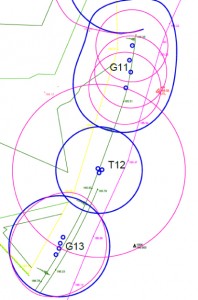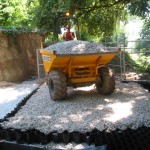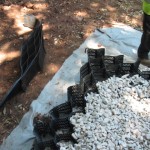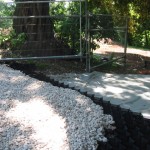Planning
DPTC provides detailed and thorough planning reports, protection plans and impact assessments.
With extensive and far reaching contacts throughout the south west, DPTC is able to negotiate with or for you to help get your planning consent where trees are an issue, particularly if you engage us at an early stage.
We produce tree reports for planning applications, commencing with Tree Constraints Plans (TCP) to grade the trees according to further use and sustainable retention, to assist arranging the general layout of a development. Thereafter where required we produce impact assessments to inform of potential impacts during construction phases, and Tree Protection Plans (TPP) for submission with planning applications, as required by Local Planning Authorities.
For larger schemes we are experienced contributors to design team meetings and can provide the arboricultural chapter of your environmental statement and impact assessments, from base line features through cumulative to residual impacts to appropriate confidence levels.
Jump to page content:
-
Preliminary Site Appraisal.
-
Tree Survey, Tree Constraints Plan.
-
Arboricultural Impact Assessment.
-
Tree Protection Plan (TPP).
-
Arboricultural Method Statements.
Preliminary site appraisal
Contact us to arrange an early site meeting – either before acquisition for valuation purposes or after to assess potential.
We can meet with you on site to informally discuss the site’s tree constraints. For some clients this is useful as they can gauge the site’s potential prior to acquisition, or negotiate on terms with the benefit of our advice.
Top ↑
Tree Survey, Tree Constraints Plan
- Initial site visit and tree survey
- Produce table of relevant trees categorised according to BS5837:2012 “Trees in relation to design, demolition and construction – Recommendations”
- Produce informal Tree Constraints Plan – constraints presented by trees to development plotted and provided as pdf copy and electronic dwg file
- Produce formal Tree Constraints Plan and report – can be used to validate a planning application for simple sites
- From this information, clients are provided with tabulated lists of the relevant trees and their ‘value’ according to BS5837, with a basic Tree Constraints Plan (TCP) which plots the constraints. This gives the client’s architect a basis to work the layout for early discussions with their client and/or the LPA, quickly, and for relatively little expense
From the above data, it is possible to make decisions of which trees may be retained within a layout which successfully allows their sustainable retention. In some cases, the formal TCP and report may be used to submit with a simple outline planning application.
Top ↑
Arboricultural Impact Assessment
- Detailed report assessing baseline conditions, direct and indirect impacts, whether residual, long term or temporary
- Derived from Tree Constraints Plan and proposed layout
- Discusses impacts and recommends alternatives and mitigation where necessary
- Can be issued to client as a draft to enable consideration of impacts and alternative layouts before committing to planning application procedure
- Informs Tree Protection Plan (TPP)
The Arboricultural Impact Assessment (AIA) is just that – an assessment of the impacts upon the trees due to the proposed development, either directly or indirectly. This is a product of the tree survey and TCP, overlaid by the proposed layout. Any trees which need to be removed to enable the development are listed, or indicated for works to allow access, for example.
The AIA considers impacts whether negative, neutral or positive. It discusses alternatives and their effectiveness, and assesses long term effects.
Top ↑
Tree Protection Plan (TPP)
- Detailed scaled drawing recommending tree protection measures.
- Required by Local Planning Authorities as part of detailed planning applications or to meet conditions attached to planning consents
- Needs to demonstrate that it is possible to protect trees on site and be practical to apply
- Presented as working drawing to forward to contractors for implementation on site
Top ↑
Arboricultural Method Statements
- A described methodology outlining procedures to minimise risk of damage to trees
- Facilitates components of the project where trees are in close proximity, to enable successful implementation of overall project
- Designed to be practically applied to provide effective protection for the retained trees with minimum expense and inconvenience for the developer
- Can be a pruning specification, or construction of no excavation drives, surfaces, roadways over rooting zones, tree protection measures






